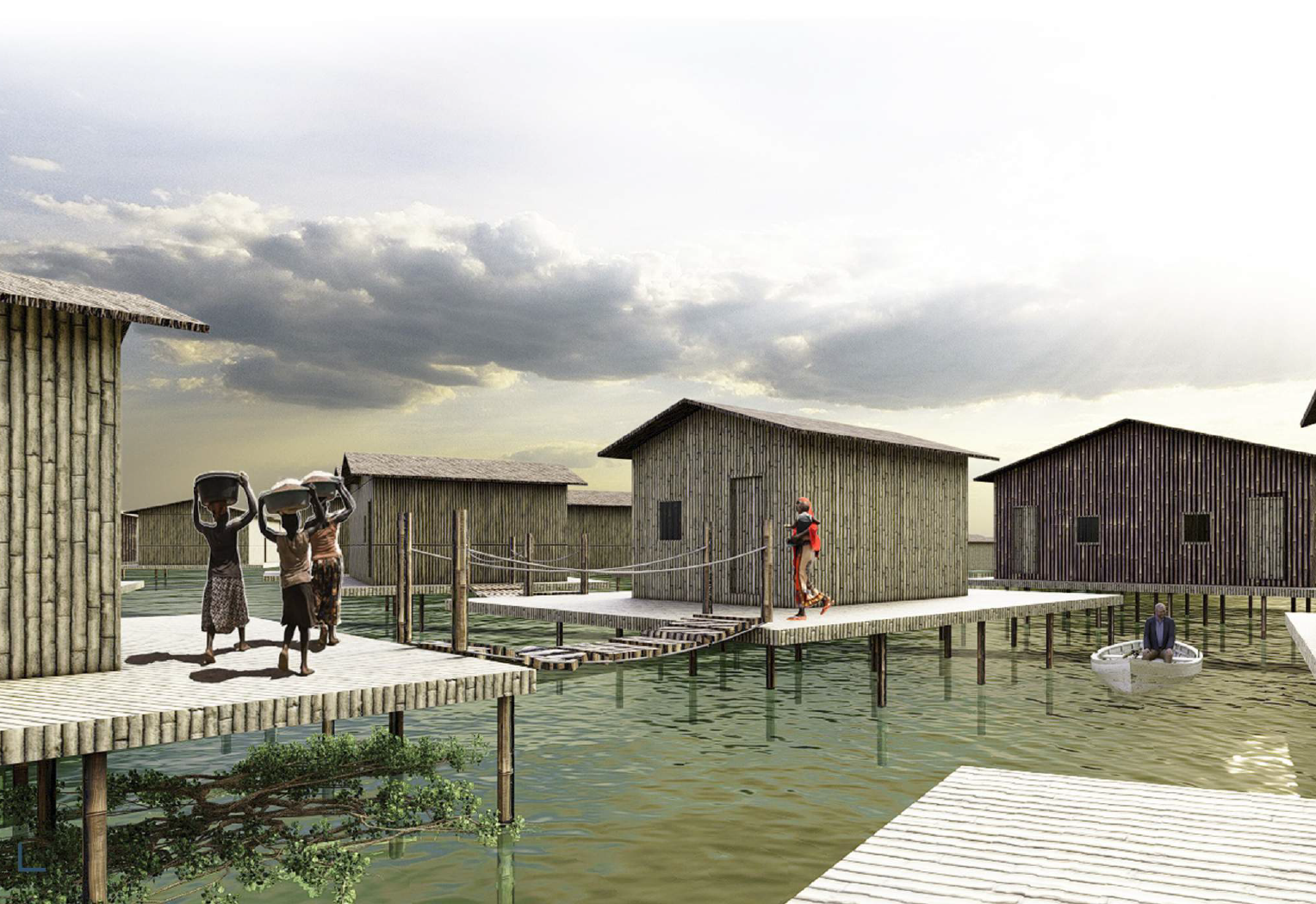
Makoko's Ecosystem Equilibrium
Theory of urban planning
Kielce University of Technology
Makoko - the world’s biggest slum, located on the coast of mainland Lagos, is struggling with serious social and economic problems. It is the most vulnerable to the climate change area because of poor communities living there and the coastline location. Limited access to potable water, overpopulation, poor sanitation and expected sea flooding are just a few out of many issues to solve.
The Makoko’s ecosystem equilibrium is an idea of the new development path, regarding a fragile living slums’ ecosystem. The design assumes a long-term process including a new amphibious house pattern (keeping the scale of the housing unit, just changing the space organization). Based on the idea of incremental housing the existing structures are built with local plant - bamboo. Widening the waterways and creating a system of bridges the circulation model is improved. Supporting the housing platforms with water barrels the flood risk is reduced. Despite the existing housing and a hospital, there are new uses such as a school, several outdoor markets (supporting the local tilapia fishermen trade) and new algae farms. Algae are simple to grow and have lots of uses in water purification, food, cosmetic, medicine industries.
The Makoko’s ecosystem equilibrium is a living ecosystem, where nature gives a response to climate change and other problems of the community. Let’s set the new Makoko’s equilibrium.
